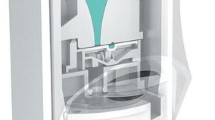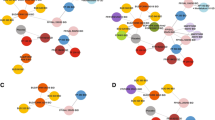Abstract
Introduction: The incidence of asthma exacerbations in patients receiving salmeterol/fluticasone propionate (Seretide™or Advair®) is low. However, when asthma control deteriorates, clinicians may instruct patients to double the dose of their inhaled corticosteroid medication for a short period. The purpose of this study was to demonstrate that doubling the dose of Seretide™for a period of 2 weeks in subjects with persistent asthma is safe and well tolerated.
Methods: This randomised, double-blind, parallel-group study was conducted in primary-care centres. Adults with a post-bronchodilator forced expiratory volume in 1 second (FEV1) of ≥70% predicted were stratified to receive a single dose of Seretide™50μ/100μ, 50μ/250μ or 50μ/500μ twice daily from a Diskus™ inhaler for a 4-week run-in period, dependent on the dose of inhaled corticosteroid on entry. Subjects were then randomised to receive either an extra inhalation of the same dose of Seretide™received during the run-in (double dose) or an inhalation of matching placebo (single dose) for 14 days in a 2: 1 ratio. Subjects were asked to record any adverse events, morning and evening heart rate (HR), peak flow and relief medication use in daily record cards. The primary endpoint was tremor as perceived by the subject. Clinic evaluations included HR, 12-lead ECG, and potassium and glucose levels.
Results: 110 and 208 subjects received single- and double-dose Seretide™, respectively. Only one subject experienced tremor. This was classified as mild and occurred in a subject receiving double-dose Seretide™(50μ/l00μ). There was no difference between the treatment groups in the incidence of tremor (difference <1%; 95% CI −6, 8). Other salmeterol-related adverse events (palpitations, muscle cramps and headache) and fluticasone propionate-related events (oral candidiasis and hoarseness) occurred in a similar percentage of subjects in each treatment group. The treatment differences for morning and evening HR measurements showed small differences between the two groups (<2 beats/min). The adjusted mean treatment difference (double dose — single dose) in morning HR was 1.1 beats/min (95% CI 0.2, 2.0) and evening HR was 0.9 beats/min (95% CI 0.1, 1.7). Seven percent of subjects receiving single-dose Seretide™and 8% receiving double-dose Seretide™had a QTc change from baseline in the interval 30–59 msec. No increases above 59 msec were seen in either group. There were no clinically significant changes from baseline for potassium levels. Two percent of subjects in the single dose and ≪1 % in the double-dose group had a change from a non-clinically significant baseline blood glucose assessment to a clinically significant abnormality at the end of treatment.
Conclusion: In circumstances in which a physician may be considering doubling the dose of Seretide™for a short period of time in adult asthmatics, this study demonstrates that doubling the dose for a period of 2 weeks is safe and well tolerated.




Similar content being viewed by others
Notes
The use of trade names is for product identification purposes only and does not imply endorsement.
References
Aubier M, Pieters W, Schlosser N, et al. Salmeterol/fluticasone propionate (50/500μ) in combination on a DISKUS inhaler (SERETIDE) is effective and safe in the treatment of steroid dependent asthma. Respir Med 1999; 93(12): 876–84
Shapiro G, Lumry W, Wolfe J, et al. Combined salmeterol 50μ and fluticasone propionate 250μ in the DISKUS device for the treatment of asthma. Am J Respir Crit Care Med 2000; 161: 527–34
Kavuru M, Melamed J, Gross G, et al. Salmeterol and fluticasone propionate combined in a new powder inhalation device for the treatment of asthma: a randomised, double blind placebo controlled trial. J Allergy Clin Immunol 2000; 105: 1108–16
Global initiiative for asthma. GINA 2003. Available from URL: http://www.ginasthma.com
Chapman KR, Ringdal, N, et al. Salmeterol and fluticasone propionate (50/250μ) administered via a combination DISKUS inhaler: as effective as when given via separate DISKUS inhalers. Can Respir J 1999; 6: 45–51
Palmer JB, Stuart AM, Shepherd GL, et al. Inhaled salmeterol in the treatment of patients with moderate to severe reversible obstructive airways disease: a 3 month comparison of the efficacy and safety of twice daily salmeterol (100μ) with salmeterol (50μ). Respir Med 1992; 86: 409–17
Dahl R, Earnshaw JS, Palmer JBD. Salmeterol: a four week study of a long-acting beta-adrenoceptor agonist for the treatment of reversible airways disease. Eur Respir J 1991; 4: 1178–84
Shrewsbury S, Hallett C. Salmeterol 100 μ: an analysis of its tolerability in single and chronic dose studies. Ann Allergy Asthma Immunol 2001; 87: 465–73
British Thoracic Society, Scottish Intercollegiate Guidelines network. British guideline on the management of asthma. Thorax 2003; 58Suppl. 1: 1–94
Harrison TW, Oborne J, Newton S, et al. Doubling the dose of inhaled corticosteroid to prevent asthma exacerbations: randomised controlled trial. Lancet 2004; 363: 271–5
Foresi A, Morelli MC, Catena E. Low-dose budesonide with the addition of an increased dose during exacerbations is effective in long-term asthma control. Chest 2000; 117: 440–6
Crane J, Burgess C, Beasley R. Cardiovascular and hypokalaemic effects of inhaled salbutamol, fenoterol and isoprenaline. Thorax 1989; 44: 136–40
Flatt A, Crane J, Purdic G, et al. The cardiovascular effects of beta adrenergic agonist drugs administered by nebulization. Postgrad Med J 1990; 66: 98–101
Brogden RN, Faulds, D. Salmeterol xinafoate: a review of its pharmacological properties and therapeutic potential in reversible obstructive airways disease. Drugs 1991; 42(5): 895–912
Pearlman DS, Chervinsky P, LaForce C, et al. Comparison of salmeterol with albuterol in the treatment of mild to moderate asthma. N Engl J Med 1992; 327: 1420–5
D’Lonzo GE, Nathan RA, Henochowicz S, et al. Salmeterol xinafoate as maintenance therapy with albuterol in patients with asthma. JAMA 1994; 271: 1412–6
Britton MG, Earnshaw JS, Palmer JB. A 12-month comparison of salmeterol with salbutamol in asthmatic patients. Eur Respir J 1992; 5: 1062–7
Kemp JP, Bierman CW, Cocchetto DM. Dose-response study of inhaled salmeterol in asthmatic patients with 24-hour spirometry and Holter monitoring. Ann Allergy 1993; 70: 316–22
Sandström T, Frederiksen B, Rosenhall L, et al. Salmeterol: a dose response study with a long acting inhaled β2-agonist [abstract]. Am Rev Respir Dis 1989; 139: A64
Ullman A, Svedymr N. Salmeterol, a new long acting β2 adrenoceptor agonist: a comparison with salbutamol in adult asthmatic patients. Thorax 1988; 43(9): 674–8
Maconochie JG, Forster JK. Dose-response study with high-dose inhaled salmeterol in healthy subjects. Br J Clin Pharmacol 1992; 33(3): 342–5
Boyd G, Morice AH, Pounsford JC, et al. An evaluation of salmeterol in the treatment of chronic obstructive pulmonary disease (COPD). Eur Respir J 1997; 10: 815–21
Maconchie JG, Minton NA, Chilton JE, et al. Does tachyphylaxis occur to the non-pulmonary effects of salmeterol? Br J Clin Pharmacol 1994; 37(2): 199–204
Bennett JA, Smyth ET, Pavord ID, et al. Systemic effects of salbutamol and salmeterol in patients with asthma. Thorax 1994; 49: 771–4
Barnes PJ, Pedersen S. Efficacy and safety of inhaled corticosteroids in asthma. Am Rev Respir Dis 1993; 148Suppl. 1: S1–26
Ayres JG, Bateman ED, Lundback B, et al. High dose fluticasone propionate 1mg daily vs. fluticasone propionate 2mg daily, or budesonide 1.6mg daily, in patients with chronic severe asthma. Eur Respir J 1995; 8: 579–86
Leblanc P, Mink P, Keistinen T, et al. A comparison of fluticasone propionate 200μ/day with beclomethasone dipropionate 400μ/day in adult asthma. Allergy 1994; 49: 380–5
Lündback B, Alexander M, Day J, et al. Evaluation of fluticasone propionate (500μday) administered either as a dry powder via a Diskhaler® inhaler or pressurized inhaler and compared with beclomethasone dipropionate (l000μ day) administered by pressurized inhaler. Respir Med 1993; 87: 609–20
Lorentzen KA, van Helmond JLM, Bauer K, et al. Fluticasone propionate lmg daily and beclomethasone dipropionate 2mg daily: a comparison over 1 year. Respir Med 1996; 90: 609–17
Pedersen S, Byrne PA. A comparison of the efficacy and safety of inhaled corticosteroids in asthma. Allergy 1997; 52Suppl. 39: 1–34
Acknowledgements
This study was sponsored by GlaxoSmithKline Ltd (protocol number: SAM40058). Christina Tyren, Alex Godwood and Dee Gor are employees of GlaxoSmithKline. The other authors have no potential conflicts of interest that are directly relevant to the contents of this manuscript.
This manuscript was prepared on behalf of the following study investigators: Dr L. Adebahr, Dr M. Adern, Dr A. Aggeryd, Dr E. Angesjo, Dr L. Backlund, Dr G. Carlsson, Dr C. Dahlqvist, Dr T. Ekbom, Dr A. Elfstrand, Dr M. Ericsson, Dr A. Friman, Dr S. Hansen, Dr B. Hanson, Dr K. Johansson, Dr G. Kolmodin, Dr R. Larsson, Dr A. Lindh, Dr T. Lindskog, Dr T. Lovoll, Dr M. Lundborg, Dr M. Lundgren, Dr O. Marmeheim, Dr B. Nilsson, Dr I. Nilsson, Dr S. Nilsson, Dr E. Ostling-Kulling, Dr B. Paradis, Dr C. Pedersen, Dr R. Persson, Dr S. Petersson, Dr K. Romberg, Dr V. Strand, Dr P. Tenbrock, Dr B. Tilling and Dr N. Wigren.
The authors would like to thank Bengt Arne Hermansson for his assistance in the management of the study and Diana Jones for her assistance in editing the manuscript.
Author information
Authors and Affiliations
Corresponding author
Rights and permissions
About this article
Cite this article
Adolfsson, LE., Lundgren, M., Tilling, B. et al. Short-Term Safety and Tolerability of Double-Dose Salmeterol/Fluticasone Propionate in Adult Asthmatic Patients. Clin. Drug Investig. 25, 231–241 (2005). https://doi.org/10.2165/00044011-200525040-00002
Published:
Issue Date:
DOI: https://doi.org/10.2165/00044011-200525040-00002




